Sonus Paradisi
Izola, 18th c. [Hauptwerk]
Izola, 18th c. [Hauptwerk]
Couldn't load pickup availability
Adriatic Organ Model (Izola, 18th Century)
A typical small instrument of the Italian style: pyramidal Principal chorus (Ripieno), embellished by the solo stops Flauto and a tasteful reed stop -Tromboncini, the resonators of which are exposed in front of the Prospekt pipes. We can find such an organ in almost every church on the northern coast of the Adriatic where the influence of Venice organ building was felt.
This particular instrument was probably made in the workshop of the most famous Venetian organ builder, Franciscan friar Petar Nakič (Pietro Nacchini) of Slavonic origin, at the time when the workshop was lead by the Nakič's pupil Francesco Dacci (1712-1784).
The organ was first made for the parish church of St. Mauro in Izola, but later was moved to the contemporary location - to the church of the St. Maria d'Alieto at the end of 18th century.
The single manual offers 10 stops. The pedal is hard coupled to the manual and does not have its own stops. The original keyboard has short baroque bass octave. The pipes in the Prospekt are new, the original ones disappeared during the first world war.
Presented to you by Leonart Studio, your authorised reseller for Sonus Paradisi in Switzerland (shipped internationally). Get your digitally sampled historical organs for the use with the Hauptwerk virtual instrument software.
Share this Sample Set
![Izola, 18th c. [Hauptwerk]](http://artful.shop/cdn/shop/files/ss_izola1.jpg?v=1692999190&width=1445)
![Izola, 18th c. [Hauptwerk]](http://artful.shop/cdn/shop/files/ss_izola2.jpg?v=1692999190&width=1445)
![Izola, 18th c. [Hauptwerk]](http://artful.shop/cdn/shop/files/ss_izola3.jpg?v=1692999191&width=1445)
![Izola, 18th c. [Hauptwerk]](http://artful.shop/cdn/shop/files/ss_izola4.jpg?v=1692999189&width=1445)
![Izola, 18th c. [Hauptwerk]](http://artful.shop/cdn/shop/files/ss_izola5.jpg?v=1692999190&width=1445)
![Izola, 18th c. [Hauptwerk]](http://artful.shop/cdn/shop/files/ss_izola6.jpg?v=1692999190&width=1445)
![Izola, 18th c. [Hauptwerk]](http://artful.shop/cdn/shop/files/ss_izola7.jpg?v=1692999191&width=1445)
![Izola, 18th c. [Hauptwerk]](http://artful.shop/cdn/shop/files/ss_izola8.jpg?v=1692999190&width=1445)
![Izola, 18th c. [Hauptwerk]](http://artful.shop/cdn/shop/files/ss_izola11_dd130a2f-9469-4b1f-8818-1ba1e8bb0121.jpg?v=1692999191&width=1445)
Specification (stop list)
-
Manual I
Principal chorus (Ripieno)
Principale bassi (8')
Principale soprani (8')
Ottava (4')
Quintadecima (2')
Decima nona (1 1/3')
Vigesima seconda (1')
Solo stops
Flauto in VIII bassi (4')
Flauto in VIII soprani (4')
Tromboncini bassi (8')
Tromboncini soprani (8') -
Manual II
-
-
Manual III
-
-
Manual IV
-
-
Pedal
hard coupled to Man I
-
Other specification
-
History
Adriatic Organ Model (Izola, 18th Century)
A typical small instrument of the Italian style: pyramidal Principal chorus (Ripieno), embellished by the solo stops Flauto and a tasteful reed stop -Tromboncini, the resonators of which are exposed in front of the Prospekt pipes. We can find such an organ in almost every church on the northern coast of the Adriatic where the influence of Venice organbuilding was felt.
This particular instrument was probably made in the workshop of the most famous Venetian organ builder, Franciscan friar Petar Nakič (Pietro Nacchini) of Slavonic origin, at the time when the workshop was lead by the Nakič's pupil Francesco Dacci (1712-1784).
The organ was first made for the parish church of St. Mauro in Izola, but later was moved to the contemporary location - to the church of the St. Maria d'Alieto at the end of 18th century.
The single manual offers 10 stops. The pedal is hard coupled to the manual and does not have its own stops. The original keyboard has short baroque bass octave. The pipes in the Prospekt are new, the original ones disappeared during the first world war.
The shape of the Italian organs did not change much over the centuries. The base is always the Principale. It may be used as a solo stop or colored by higher aliquotes forming so a greater or lesser plenum (Ripieno). The timbre of the Ripieno remains soft and mild even when all the aliquotes are drawn. The Flauto (4') is used as a solo stop or it may be combined with the Principale or with the Ottava, or with both. Special combination "resembling a cornet consort" is given to be composed of Ottava+Flute+Decimanona+Vigesimaseconda. It may be also supported by the Tromboncini to give stronger reed timbre.
The divided stops (Principale, Flute and the Tromboncini) give the possibility of playing dialogues. G. Callido in one of his registration tips gives this suggestions for the use of the divided stops.
Special thanks to
Univ. doc. Dalibor Miklavčič for introducing to us the art of the Slovenian organs.
Rev. dom. Župnik of the Izola church for his warm welcome and support during the recording.
Further reading
Barbara Owen: The Registration of Baroque Organ Music. 1997.
Bizjak, Milko - Škulj, Edo - Dolenc, Oskar.: Orgle na Slovenskem. 1985.
Features
The Compass
The original compass of the manuals is 4 octaves without the lowest C#, D#, F#, G#. The pedal compass is 18 tones. This is carefully modeled in the original version of the ODF. The extension of the manual and the pedal is offered in another ODF: the manual extends to 4 and half octaves (up to f), the pedal has 32 tones (up to g), the bass octave chromaticised.
Sample Quality
The samples are offered in 24bit/48kHz quality, multiple releases (3 levels). The reverberation time is up to 4 seconds for the ambiental versions. Special Temperament chart is offered for the installation to emulate the original organ tuning. The sample set is presented in 3 different versions:
Wet: distant recording capturing the original acoustics of the church.
RAM requirements:
24-bit : 2.0 GB
Surround: the surround recording uses 4 independent channels for each virtual pipe (for each sample). The sound of the organ pipes is captured by the front microphones, the church response by the rear microphones. The 4 channels are extracted from the recording amd assembled to the sample set. The two front channels are used to supply the sound of the organ to the front speakers, while the 2 other channels offer the response of the church. You can use these two channels to feed your surround (rear) speakers. Please note, that at least 4 speakers are needed to reproduce the multi-channel audio.
RAM requirements:
24-bit : 3.6 GB
Dry: the samples offer the close-up recording of individual pipes. Unlike the conventional mono-panned sample sets, this is multi-channel dry recording, offering 3 natural channels for each pipe: the left, the right and the center. The rank routing dialog below shows the mapping of the channels to the audio outputs of your multi-channel audio system. If you use only 2-channel system (stereo), you can still use the sample set, by simply muting the unused channels.
This sample set may be used well in self-reverberant spaces (such as churches) or it may be mixed with the digital reverb. By the addition of digital reverb you can virtually "move" the organ into various spaces according to your need and your liking.
RAM requirements:
24-bit: 1.85 GB
The rank routing dialog box for the dry version of the sample set: each stop is composed of the two virtual "ranks" containing various audio channels. The left and right channels are marked by the "L-R" sign. You should route these virtual ranks into your main audio output (left and right speaker). If you have also the center speaker, you can route the ranks labeled with the "C" into this center speaker.
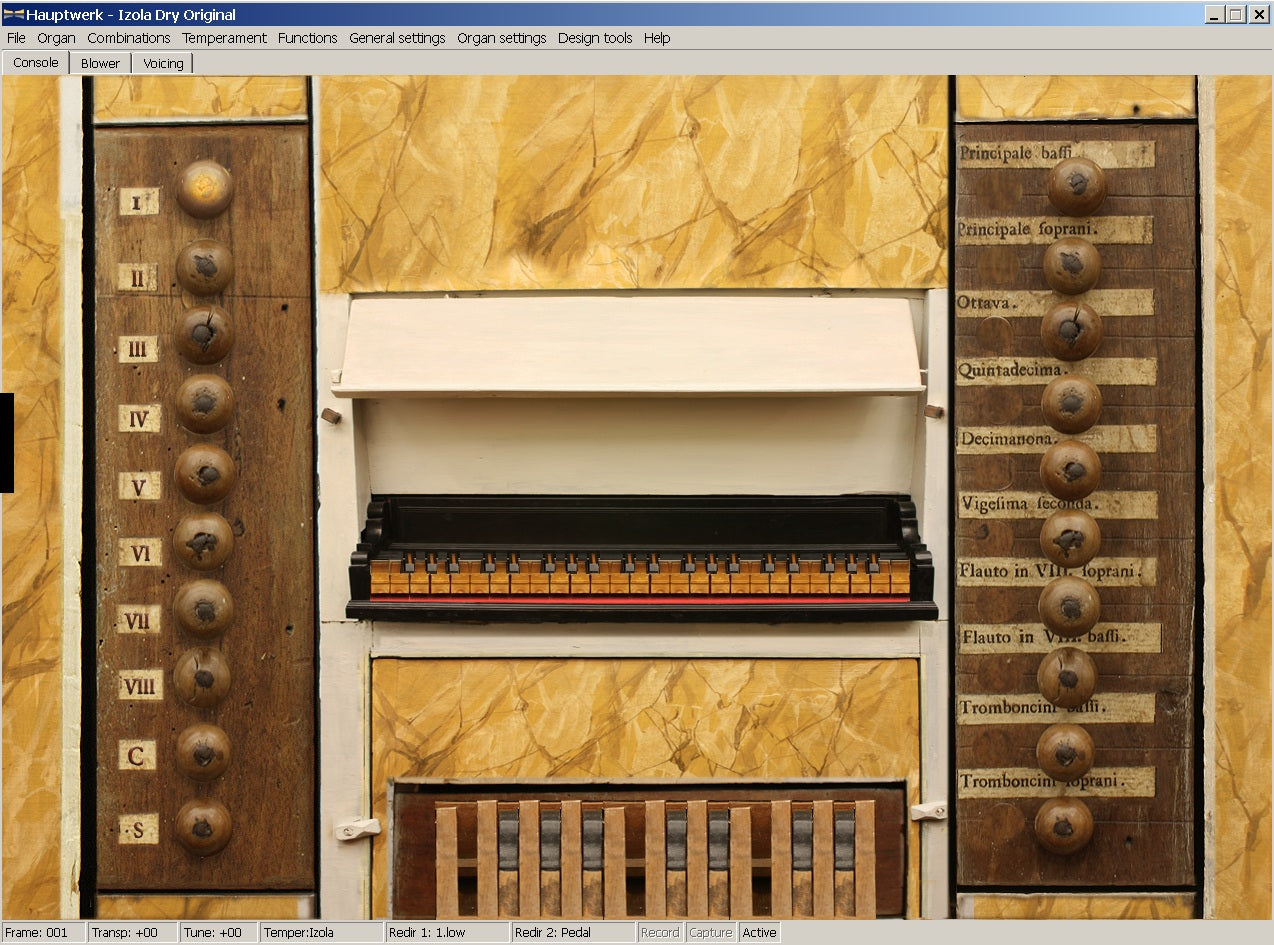

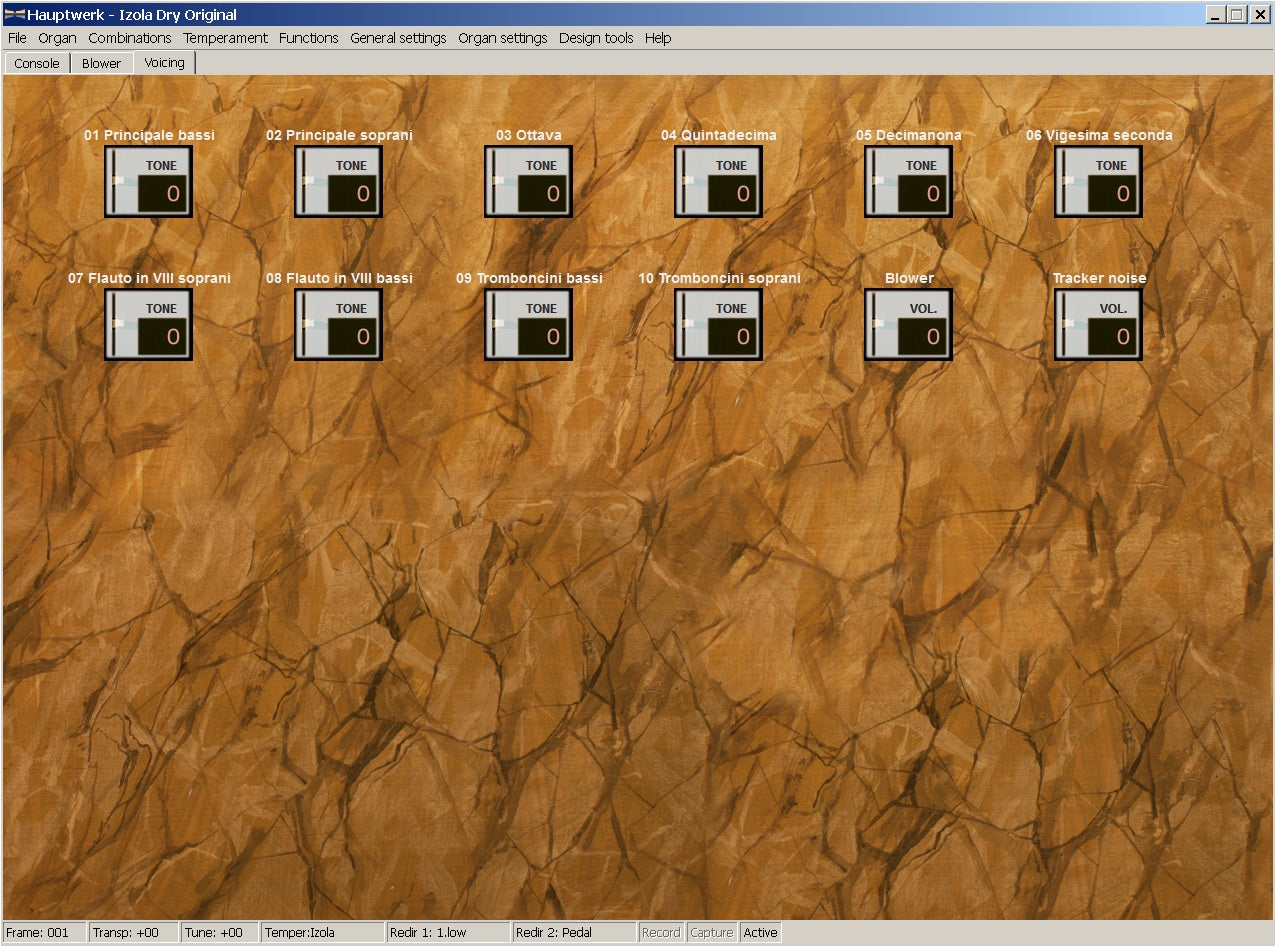
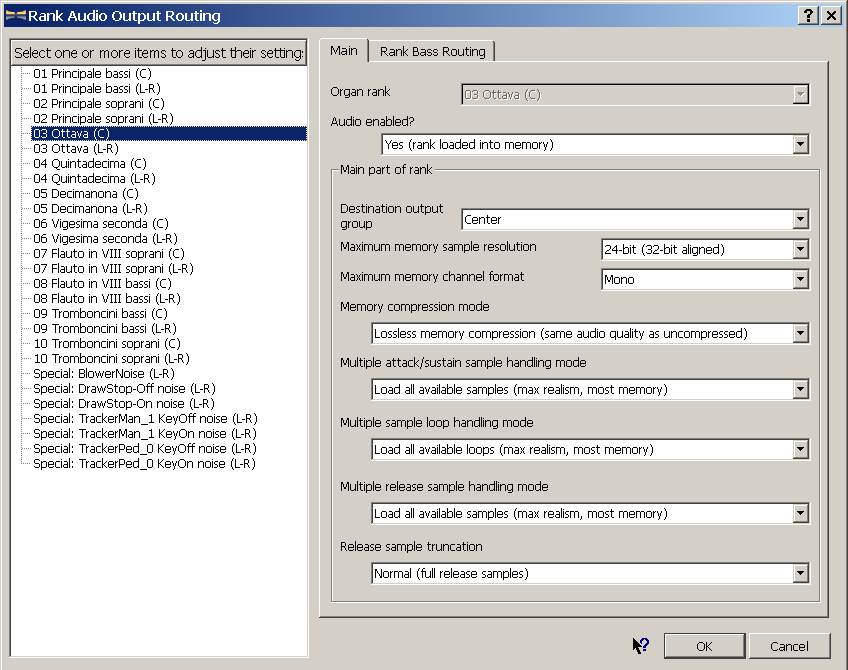
Requirements
Hauptwerk v.4.20 and higher supported.
Wet RAM requirements:
24-bit : 2.0 GB
Surround RAM requirements:
24-bit : 3.6 GB
Dry RAM requirements:
24-bit: 1.85 GB
This Hauptwerk Sample Set is presented to you by Leonart Studio, an authorised reseller for the manufacturer Sonus Paradisi in Switzerland (shipping internationally). Enjoy this digitally sampled organ library for the use with Hauptwerk software and start expanding your historical organ collection today.
More Hauptwerk Sample Sets
-
Casavant, 1995 [Hauptwerk]
Vendor:Sonus ParadisiRegular price CHF 174.90Regular priceUnit price / per -
Bückeburg, 1997 [Hauptwerk]
Vendor:Sonus ParadisiRegular price From CHF 1.10Regular priceUnit price / per -
Schwerin, Dom, Ladegast Organ 1871 [Hauptwerk]
Vendor:Sonus ParadisiRegular price CHF 616.00Regular priceUnit price / per -
Segovia, 1772 [Hauptwerk]
Vendor:Sonus ParadisiRegular price CHF 317.90Regular priceUnit price / per -
Reuter, 1928 [Hauptwerk]
Vendor:Sonus ParadisiRegular price CHF 473.00Regular priceUnit price / per -
Rotterdam Hoofdorgel, 1973 [Hauptwerk]
Vendor:Sonus ParadisiRegular price From CHF 330.00Regular priceUnit price / perCHF 958.10Sale price From CHF 330.00Sale -
Groningen, 1450-1740 [Hauptwerk]
Vendor:Sonus ParadisiRegular price From CHF 658.90Regular priceUnit price / perCHF 1,681.90Sale price From CHF 658.90Sale -
Frankfurt a.d. Oder, 1975 [Hauptwerk]
Vendor:Sonus ParadisiRegular price From CHF 220.00Regular priceUnit price / perCHF 550.00Sale price From CHF 220.00Sale -
Piacenza, 1838 [Hauptwerk]
Vendor:Sonus ParadisiRegular price CHF 330.00Regular priceUnit price / per -
Lüdingworth, 1683 [Hauptwerk]
Vendor:Sonus ParadisiRegular price CHF 330.00Regular priceUnit price / per


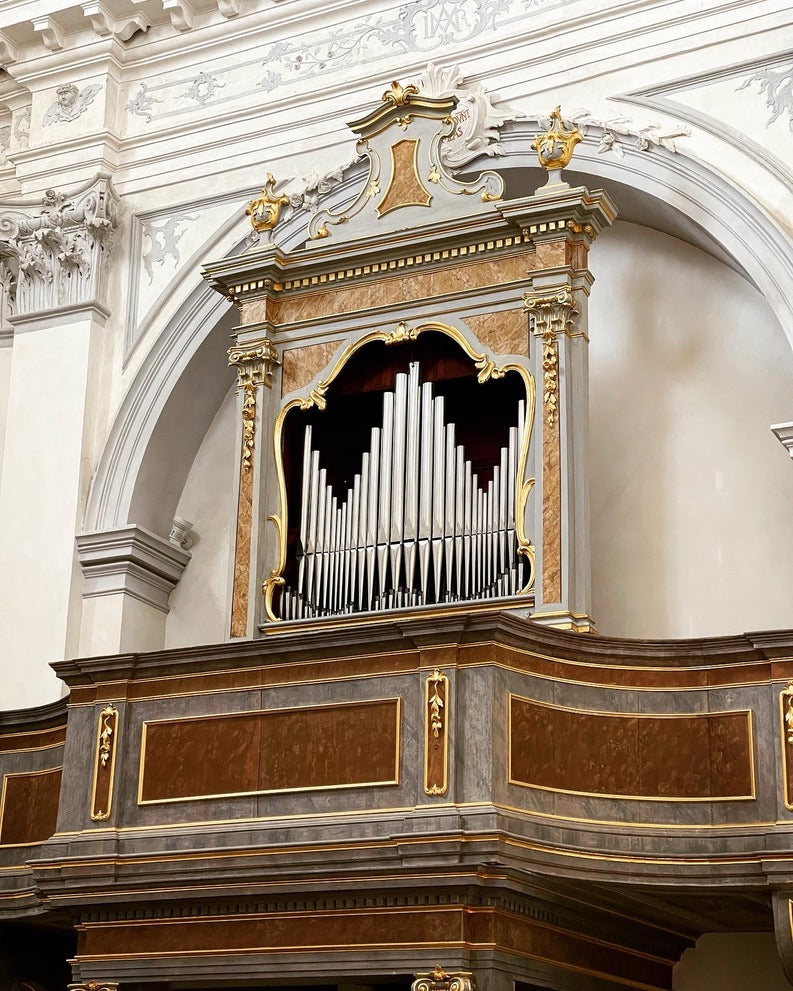
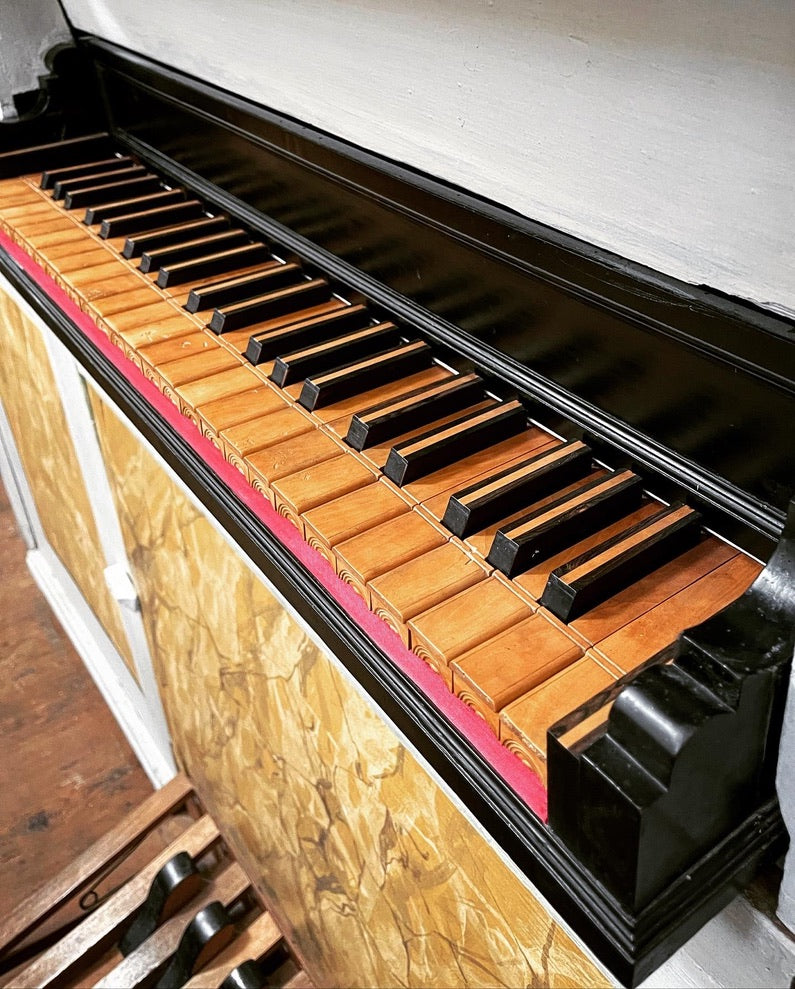



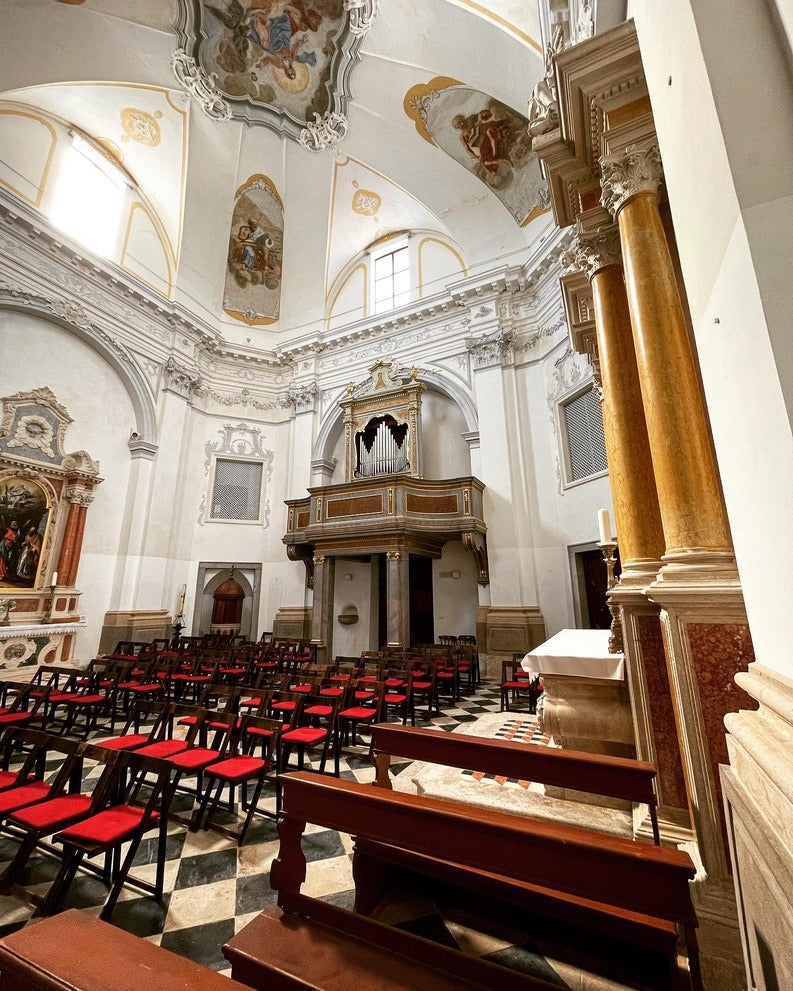
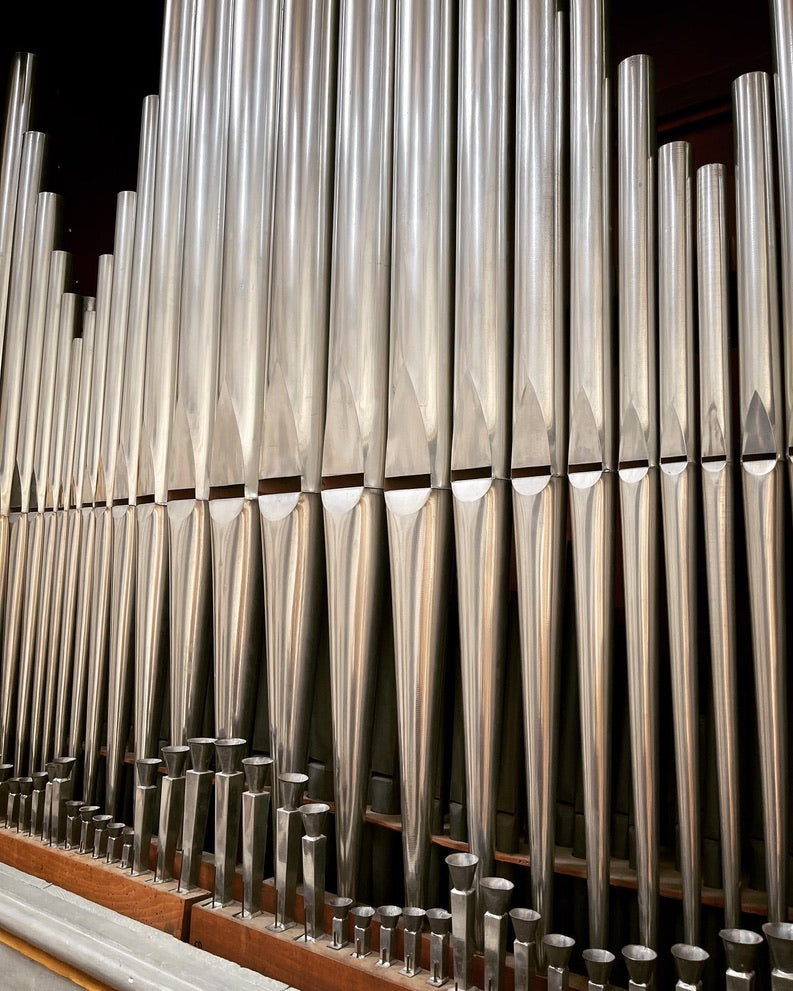
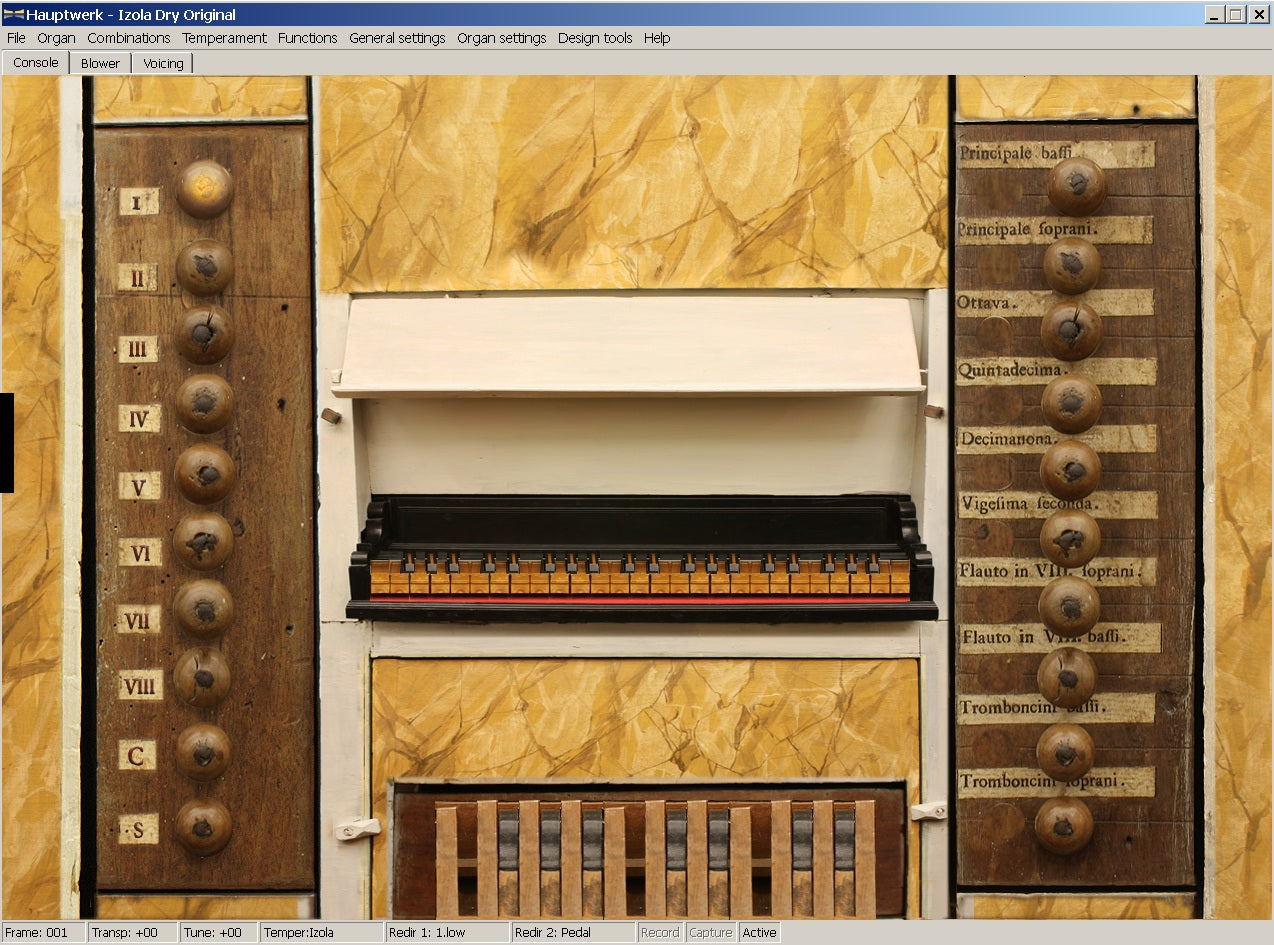
![Casavant, 1995 [Hauptwerk]](http://artful.shop/cdn/shop/files/ss_casavant1.jpg?v=1693319885&width=533)
![Bückeburg, 1997 [Hauptwerk]](http://artful.shop/cdn/shop/files/ss_bueckeburg1.jpg?v=1692967628&width=533)
![Schwerin, Dom, Ladegast Organ 1871 [Hauptwerk]](http://artful.shop/cdn/shop/files/ladegast1.jpg?v=1759140126&width=533)
![Segovia, 1772 [Hauptwerk]](http://artful.shop/cdn/shop/files/ss_segovia1.jpg?v=1714213906&width=533)
![Reuter, 1928 [Hauptwerk]](http://artful.shop/cdn/shop/files/ss_Reuter1.jpg?v=1693321024&width=533)
![Rotterdam Hoofdorgel, 1973 [Hauptwerk]](http://artful.shop/cdn/shop/files/ss_RotterdamMain1.jpg?v=1693279529&width=533)
![Groningen, 1450-1740 [Hauptwerk]](http://artful.shop/cdn/shop/files/ss_Groningen1.jpg?v=1693275425&width=533)
![Frankfurt a.d. Oder, 1975 [Hauptwerk]](http://artful.shop/cdn/shop/files/ss_frankfurtoder1.jpg?v=1692974219&width=533)
![Piacenza, 1838 [Hauptwerk]](http://artful.shop/cdn/shop/files/ss_piacenza1.jpg?v=1693003521&width=533)
![Lüdingworth, 1683 [Hauptwerk]](http://artful.shop/cdn/shop/files/ss_luedingworth1.jpg?v=1692998051&width=533)